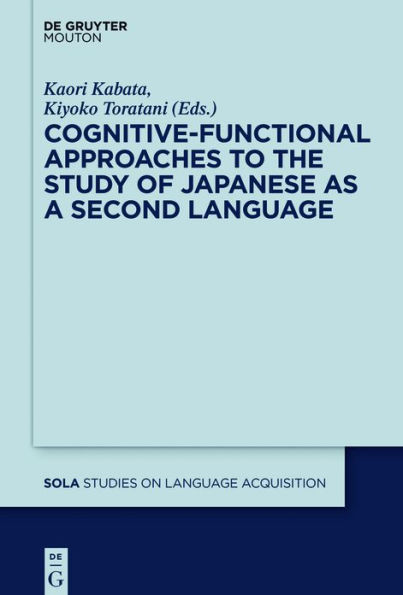Table of Contents
Preface vii
List of contributors ix
1 Application of cognitive-functional linguistics to the study of Japanese as a second and foreign language: An introduction Kaori Kabata Kiyoko Toratani 1
Part I Usage-based approaches
2 The acquisition of linguistic categories in second language acquisition: A functionalist approach Yasuhiro Shirai 13
3 Friendly and respectful politeness: A functional analysis of L2 utterances Osamu Ishiyama 33
4 What learners know about lexical aspect in L2: Motion verbs kuru 'come' and iku 'go' and the acquisition of imperfective -teiru in Japanese Yumiko Nishi 57
5 A usage-based account of learner acquisition of Japanese particles ni and de Kaori Kabata 89
6 A usage-based approach to relativization: An investigation of advanced-learners' written production of relative clauses in Japanese Sanako Mitsugi 113
Part II Conceptual approaches
7 A multimedia encyclopedia of Japanese mimetics: A frame-semantic approach to L2 sound-symbolic words Kimi Akita 139
8 A cognitive approach to the comprehension of intransitive constructions in L1 and L2 Japanese Zoe Pei-sui Luk 169
9 An L2 corpus study of the Japanese grammatical marker -te-simau: An application of force dynamics Sayaka Abe 203
10 The L2 acquisition of Japanese Motion event descriptions by L1 English speakers: An exploratory study Kiyoko Toratani 237
11 Influence of L1 English on the descriptions of motion events in L2 Japanese with focus on deictic expressions Yuko Yoshinari 275
12 Subject-object contrast (shukaku-tairitsu) and subject-object merger (shukaku-gouitsu) in "thinking for speaking": A typology of the speaker's preferred stances of construal across languages and its implications for language teaching Yosnihiko Ikegami 301
Part III Current state and future directions of cognitive-functional-linguistics-informed L2 studies
13 A survey of work published in Japan at the dawn of the new millennium Shingo Imai 321
14 Towards better integration of linguistics research, SLA, and pedagogy Kaori Kabata Kiyoko Toratani 361
Subject index 369



